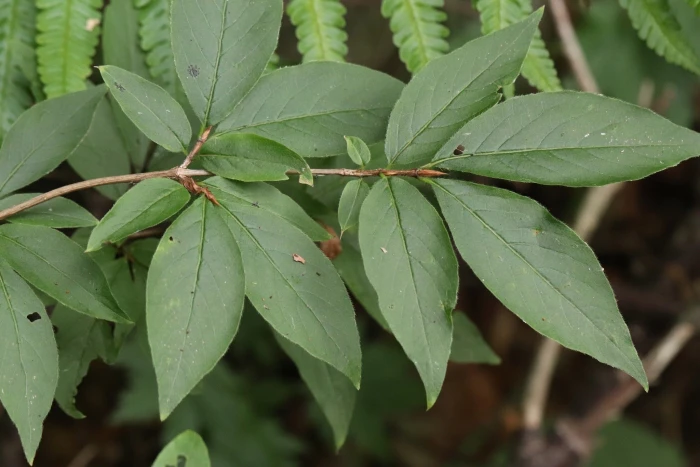Maximowicz’s Honeysuckle
(Lonicera maximowiczii)
Maximowicz’s Honeysuckle (Lonicera maximowiczii)
/
/

Nina Filippova
CC BY 4.0
Image By:
Nina Filippova
Recorded By:
Copyright:
CC BY 4.0
Copyright Notice:
Photo by: Nina Filippova | License Type: CC BY 4.0 | License URL: http://creativecommons.org/licenses/by/4.0/ | Rights Holder: Nina Filippova | Publisher: iNaturalist | Date Created: 2021-09-03T13:15:19-07:00 |













Estimated Native Range
Climate Requirements
| • Precipitation | 11" - 60" |
| • High Temp. | 66°F - 89°F |
| • Low Temp. | -37°F - 38°F |
Summary
Lonicera maximowiczii, commonly known as Maximowicz’s Honeysuckle or Korean Honeysuckle, is a deciduous perennial shrub native to temperate forests, forest edges, and shrublands of Eastern Asia, including Korea, China, and the Russian Far East. It exhibits a moderate growth rate and typically reaches a height of 6-10 feet (1.8-3 meters) with a similar spread. The plant features ovate to lanceolate leaves and bears tubular, yellow flowers that are particularly showy and fragrant during their summer blooming season. These flowers are followed by black berries that can attract birds and other wildlife.
Maximowicz’s Honeysuckle is valued for its ornamental flowers, which add a splash of color to garden settings. It is often used in border plantings, as a specimen shrub, or for naturalizing areas. This honeysuckle is relatively easy to maintain and can adapt to a range of soil types, including clay, loam, or sandy soils, as long as they provide medium to fast drainage. It thrives in full sun to part shade and requires moderate watering. While generally disease-resistant, it can be susceptible to powdery mildew and should be monitored for aphids and scale insects. Gardeners should be aware that some Lonicera species can become invasive; however, Lonicera maximowiczii is not typically known for aggressive spread.CC BY-SA 4.0
Maximowicz’s Honeysuckle is valued for its ornamental flowers, which add a splash of color to garden settings. It is often used in border plantings, as a specimen shrub, or for naturalizing areas. This honeysuckle is relatively easy to maintain and can adapt to a range of soil types, including clay, loam, or sandy soils, as long as they provide medium to fast drainage. It thrives in full sun to part shade and requires moderate watering. While generally disease-resistant, it can be susceptible to powdery mildew and should be monitored for aphids and scale insects. Gardeners should be aware that some Lonicera species can become invasive; however, Lonicera maximowiczii is not typically known for aggressive spread.CC BY-SA 4.0
Plant Description
- Plant Type: Shrub
- Height: 6-10 feet
- Width: 5-6 feet
- Growth Rate: Moderate
- Flower Color: Yellow
- Flowering Season: Summer
- Leaf Retention: Deciduous
Growth Requirements
- Sun: Full Sun, Part Shade
- Water: Medium
- Drainage: Medium, Fast
Common Uses
Bird Garden, Butterfly Garden, Fragrant, Low Maintenance, Showy Flowers
Natural Habitat
native to temperate forests, forest edges, and shrublands of Eastern Asia, including Korea, China, and the Russian Far East
Other Names
Common Names: Korean Honeysuckle
Scientific Names: Lonicera maximowiczii, Caprifolium maximowiczii, Lonicera maximowiczii var. okamotoana, Lonicera maximowiczii var. stenophylla, Lonicera okamotoana, Lonicera sachalinensis var. barbinervis, Lonicera sachalinensis var. stenophylla, Xylosteon maximowiczii
GBIF Accepted Name: Lonicera maximowiczii